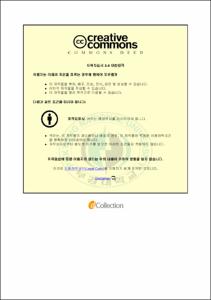조류와 박테리아 비가 활성조류공정에 미치는 영향
- Abstract
- The purpose of this study is organic compounds and nutrients removal by proportion of Algae and Bacteria mixing. This study is involved the principle of Activated Algae System by Ross.E Mckinney in 1992.
This study was conducted by two steps. First, we operated batch reactor at 8 case of A/B ratio. It was continued for 200 hours and 10 times sampling. Second, cultivated Heterotrophic Bacteria and Autotrophic Bacteria, then, mixed it together, and then mixed it with Algae. It has influent, effluent every day. HRT & SRT of semi-continuous reactor is fixed by 6, 8, 12 day.
In accordance with Algae/bacteria ratio, through the batch reaction, , TN, TP, and removal efficiency of the reaction according to the elapsed time was calculated algae/bacteria removal efficiency according to the proportion of each relation was derived. In addition, algae/bacteria ratio when compared with the initial value as a whole showed a tendency to increase. Injected into the influent at the beginning of the batch reaction, and no feeding the injection until the end of the reaction. So algae/bacteria ratio increased, the because of the reduction of endogenous respiration by the bacteria and growth of algae.
In the continuous reactor under HRT and SRT, and algae/bacteria ratio of organic matter and nutrient removal efficiency due to evaluate. Due to low precipitation reactions of algae in continuous reactor, HRT and SRT could not be set differently, the two factors were the same value.
Similar to the batch reactor, in accordance with HRT, and algae/bacteria based on removal efficiency of each water quality item, and derive equations, and the algae /bacteria ratio evaluated the changes.
About removal, if, bacteria and HRT value was larger, the removal efficiency was relatively good. About and TN, if more algae, and HRT, removal efficiency showed a good trend but it was not show significant differences. has showm similar tendency with removal efficiency.
About MLSS in the reactor, it increased sharply after 1 day, and since then it has maintained a constant value.
In accordance with various algae/bacteria ratio, we did a experiment about sedimentation, The result of the sedimentation was good. So we can say this wastewater treatment process are applicable the actual process.
- Issued Date
- 2012
- Awarded Date
- 2012. 2
- Type
- Dissertation
- Publisher
- 부경대
- Affiliation
- 부경대학교
- Department
- 대학원 환경공학과
- Advisor
- 이병헌
- Table Of Contents
- 목차 ⅰ
List of Tables ⅲ
List of figures ⅳ
Abstract ⅵ
제 1 장 서론 1
제 2 장 이론적 배경 3
2.1 조류와 박테리아에 의한 하수처리 3
2.1.1 활성조류공법의 기본원리 3
2.1.2 공생관계에 있는 조류와 박테리아를 이용한 하수처리의 역사 5
2.1.3 활성조류공법의 영향인자 7
2.1.4 종속영양박테리아와 독립영양박테리아 8
2.2 조류성장에 필요한 제한요인 10
2.2.1 빛 (Light) 10
2.2.2 (Carbon dioxide) 11
2.2.3 온도 (Temperature) 11
2.2.4 혼합 (Mixing) 13
2.2.5 pH 13
2.3 영양염류의 제거기작 16
2.3.1 질소의 제거기작 16
2.3.2 인의 제거기작 23
제 3 장 재료 및 실험방법 28
3.1 순수 미생물을 얻기 위한 반응조 운전 28
3.1.1 조류 배양조 운전 28
3.1.2 박테리아 반응조 운전 32
3.2 회분식 반응조 형태 및 운전방법 35
3.2.1 회분식 반응조 형태 35
3.2.2 회분식 반응조의 운전 36
3.3 연속식 반응조 형태 및 운전방법 38
3.3.1 연속식 반응조 형태 38
3.3.2 연속식 반응조의 운전 39
3.4 조류와 박테리아의 비에 따른 조류의 생산량 42
3.4.1 조류의 이론적인 생산량 42
3.4.2 조류와 박테리아의 비에 따른 조류의 실제반응에서 생산량 44
3.5 조류와 박테리아 비에 따른 침전 실험 46
3.6 수질분석 47
3.6.1 수질분석방법 47
3.6.2 시료의 채취 및 분석주기 47
3.6.3 실험오차와 분석오차 48
제 4 장 실험결과 및 고찰 49
4.1 회분식 반응조의 처리특성 49
4.2 연속식 반응조의 처리특성 59
4.3 조류와 박테리아 비에 따른 조류의 생산량 산정 75
4.4 조류와 박테리아 비에 따른 침전특성 77
제 5 장 결론 79
장래연구과제 81
제 6 장 참 고 문 헌 82
부록 90
- Degree
- Master
- Files in This Item:
-
-
Download
 조류와 박테리아 비가 활성조류공정에 미치는 영향.pdf
기타 데이터 / 3.05 MB / Adobe PDF
조류와 박테리아 비가 활성조류공정에 미치는 영향.pdf
기타 데이터 / 3.05 MB / Adobe PDF
-
Items in Repository are protected by copyright, with all rights reserved, unless otherwise indicated.